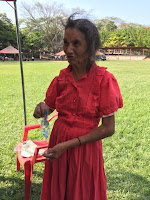More than 100 Salvadorans per day apprehended crossing into US
Statistics from the US Customs and Border Patrol show a new surge of unaccompanied children from El Salvador as well as Guatemala and Honduras. The biggest surge is from El Salvador, where 9617 minors have been apprehended in the seven months between October 1, 2015 and April 30, 2016. In contrast, for the 12 month period ending September 30, 2015, 9389 children were apprehended. So with 5 months left in the US government's fiscal year, last year's total has already been exceeded. In addition, there were 13,392 Salvadorans apprehended so far crossing the border in groups that included an adult and a child. It is no coincidence that the surge in migrants comes at the same time as the bloody surge in El Salvador's gang-fueled violence. To provide a comparison, the 23 thousand Salvadorans captured compare to roughly 9000 from Mexico, despite Mexico's much larger population and proximity to the US. That's almost 100 people per...



